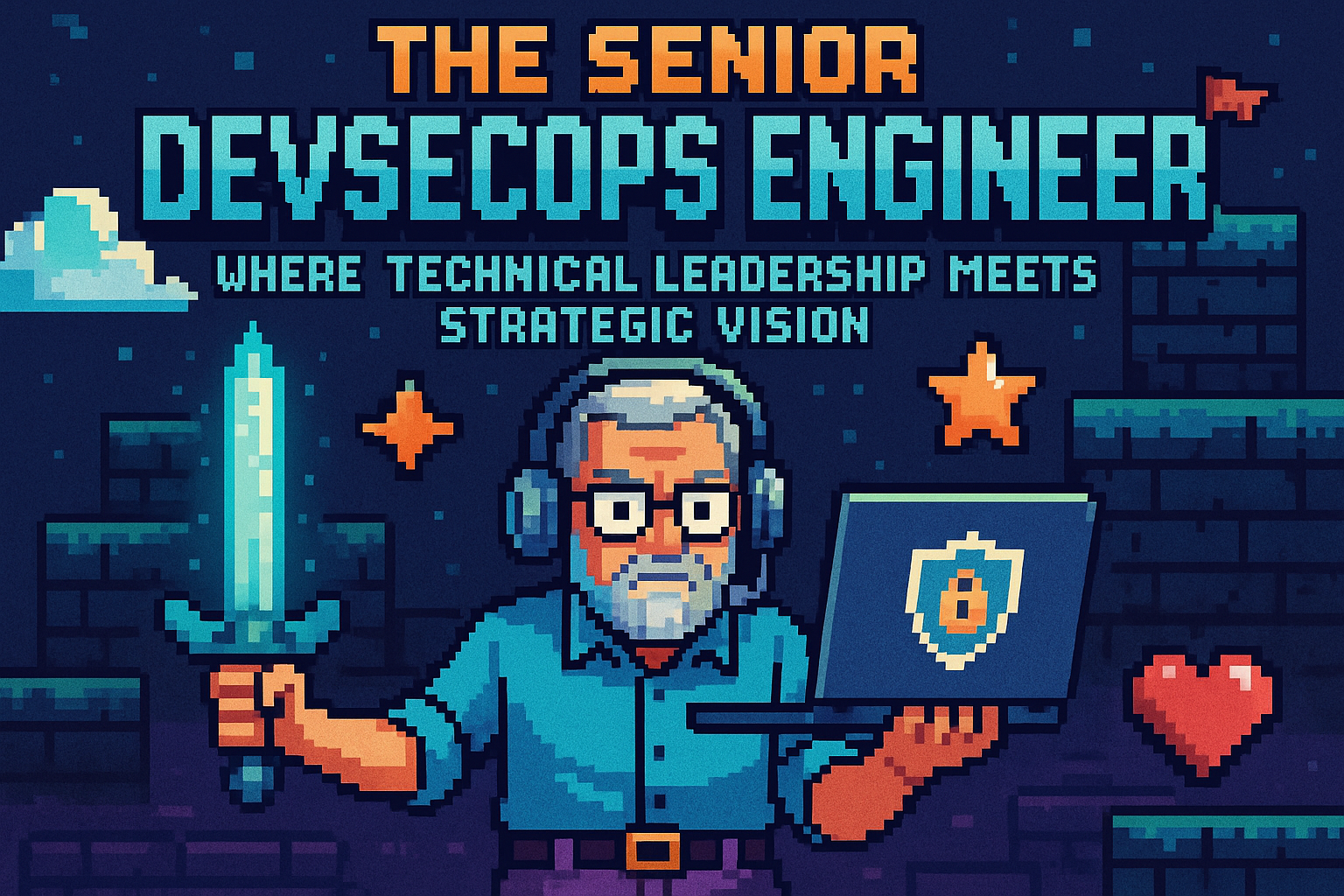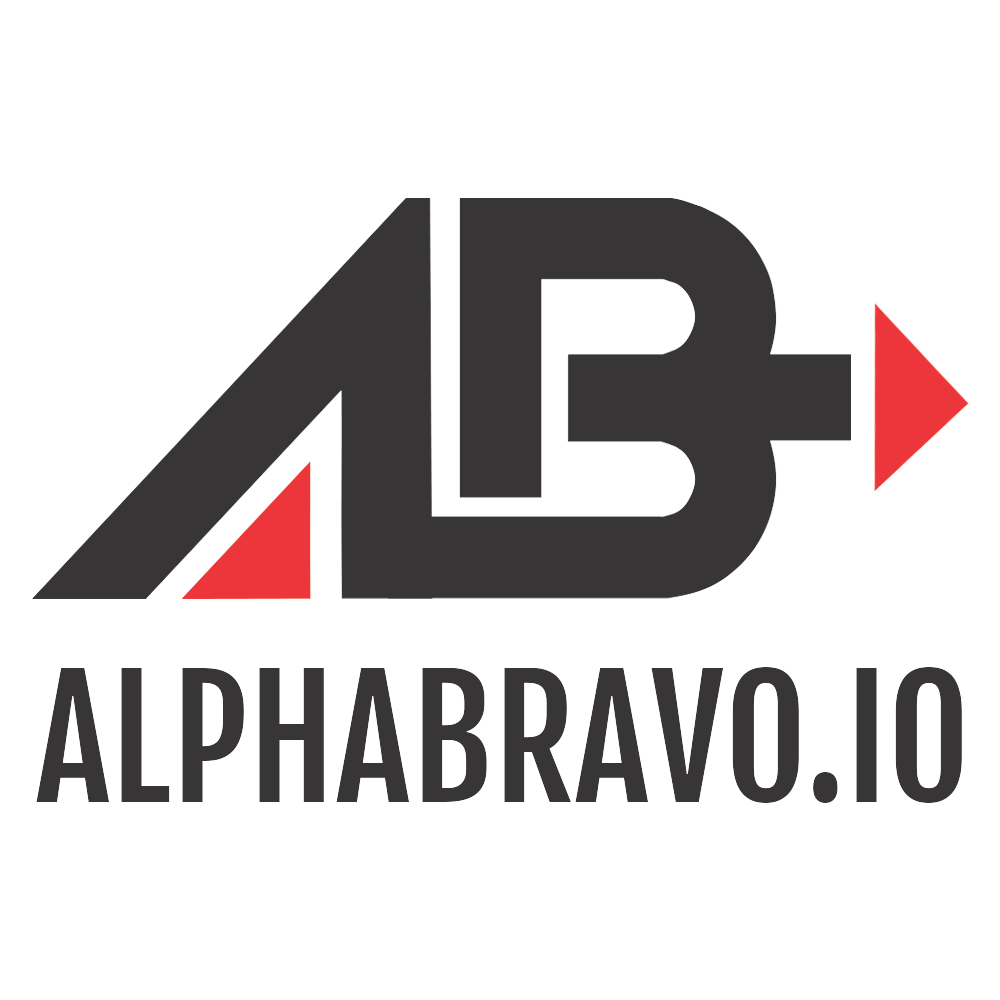The Senior DevSecOps Engineer: Where Technical Leadership Meets Strategic Vision

You've made it past the mid-level grind. You've survived countless incident calls, designed systems that actually scale, and probably mentored a few junior engineers who now send you LinkedIn thank you messages. But stepping into a senior DevSecOps role? That's where the real game begins.
The median salary jump tells part of the story. Senior DevSecOps engineers are pulling in $219k annually, with ranges from $104k to $335k depending on location and company size. But here's what the salary surveys don't capture: you're not just getting paid more for doing the same work better. You're getting paid to think differently about problems that affect entire organizations.
This isn't about writing better Terraform or knowing more Kubernetes commands. Senior engineers are expected to have 7-10 years of experience, but more importantly, they're expected to be the person everyone turns to when things get complicated. You're the technical decision maker, the strategic planner, and the person who translates business requirements into secure, scalable technical solutions.
The Fundamental Shift: From Solving to Designing
A mid-level DevSecOps engineer solves problems. A senior DevSecOps engineer designs systems that prevent problems from occurring in the first place. Think about that for a moment. Your job isn't just to respond to security incidents anymore; it's to architect environments where those incidents become statistically unlikely.
Strategic thinking becomes your primary skill. You're not just implementing security tools; you're designing security architectures that scale across multiple teams, applications, and cloud environments. When a company decides to migrate to multi-cloud, you're the one evaluating the security implications and designing the governance frameworks that make it possible.
Policy as Code moves beyond implementation to strategy. You're not just writing Open Policy Agent rules; you're designing policy frameworks that other teams can extend and customize for their specific needs. Your policies become the foundation that other engineers build upon, which means they need to be both comprehensive and flexible enough to handle use cases you haven't even thought of yet.
The complexity multiplies when you realize you're designing for teams you've never met, working on applications you've never seen, in environments that don't exist yet. That's senior-level thinking: building systems that work for scenarios you can't predict.
Technical Leadership: Beyond Code Reviews
Here's where it gets interesting: technical leadership in DevSecOps isn't just about being the best at the technical stuff anymore. You need to be able to explain complex security concepts to business stakeholders who think encryption is just something that happens automatically.
Architecture decisions become your domain. Should we use service mesh for east-west traffic security? How do we implement zero-trust networking across hybrid cloud environments? What's our container security strategy for the next three years? These aren't questions you research and recommend anymore; these are decisions you make and own.
Tool evaluation and selection becomes strategic. A junior engineer implements Trivy for container scanning. A senior engineer evaluates whether Trivy, Aqua Security, or Twistlock better aligns with the organization's risk tolerance, budget constraints, and long-term security roadmap. You're thinking about vendor relationships, support lifecycles, and integration complexity across multiple teams.
Cross-functional collaboration expands dramatically. You're working directly with CISOs on security strategy, with engineering directors on technical roadmaps, and with compliance teams on regulatory requirements. Your technical decisions need to align with business objectives, and your security implementations need to enable, not hinder, development velocity.
Mentorship and Knowledge Transfer: Building the Next Generation
This might be the most underrated aspect of senior DevSecOps work: you're responsible for developing the people who will eventually replace you. Not just teaching them tools, but helping them develop the judgment and systems thinking that makes someone effective at this level.
Technical mentorship goes beyond code reviews. You're helping mid-level engineers understand why certain architectural decisions were made, how to evaluate trade-offs between security and performance, and how to communicate technical concepts to non-technical stakeholders. The questions you get aren't "how do I configure this tool?" but "how do I decide which approach is right for this situation?".
Knowledge transfer becomes institutional memory. You've seen multiple technology cycles, survived several major incidents, and witnessed the consequences of both good and bad architectural decisions. Your job is ensuring that institutional knowledge doesn't leave with you when you eventually move on to the next challenge.
Building security culture across teams. You're not just implementing security tools; you're changing how entire organizations think about security. This means working with development teams to embed security thinking into their daily practices, not just their deployment pipelines.
Subject Matter Expertise: The Deep Technical Knowledge
Senior DevSecOps engineers are expected to be the definitive technical authority in their domain. When someone has a complex question about container security, Kubernetes networking policies, or cloud IAM design, they come to you for answers.
Advanced security automation becomes your specialty. You're not just integrating SAST and DAST tools into CI/CD pipelines; you're building custom security automation that addresses your organization's specific risk profile. This might mean developing custom vulnerability correlation systems, building automated incident response workflows, or creating security metrics dashboards that actually provide actionable insights.
Multi-cloud security architecture gets complex quickly. You understand the security models of AWS, Azure, and GCP, but more importantly, you know how to design consistent security controls across all three platforms. You're thinking about identity federation, cross-cloud networking, and how to maintain security visibility when workloads span multiple cloud providers.
Compliance and governance become architectural concerns. SOC 2, ISO27001, and PCI compliance aren't just checkboxes anymore; they're architectural requirements that influence every technical decision. You're designing systems that make compliance audits straightforward rather than painful exercises in documentation archaeology.
The Enterprise Scale Challenge
Working at senior level means dealing with enterprise-scale problems that don't have simple solutions. Your security decisions affect thousands of developers, hundreds of applications, and potentially millions of end users.
Platform engineering becomes a core competency. You're not just using Kubernetes; you're designing Kubernetes platforms that other teams consume. This means thinking about multi-tenancy, resource quotas, network policies, and how to provide self-service capabilities while maintaining security boundaries.
Organizational security strategy requires business understanding. You need to understand how security investments translate to business outcomes. Can you quantify the risk reduction from implementing zero-trust networking? How do you justify the cost of advanced threat detection tools? These conversations happen in boardrooms, not just technical meetings.
Incident response at scale changes everything. When a security incident affects multiple business units, dozens of applications, and potentially customer data, the response coordination becomes as important as the technical remediation. You're designing incident response processes that can scale from individual application issues to company-wide security events.
Advanced Technical Domains
The technical depth expected at senior level goes far beyond what most people realize. You're expected to have deep expertise in multiple interconnected domains and understand how they influence each other.
Container and Kubernetes security gets sophisticated. Runtime security monitoring with Falco, network policy enforcement with Calico, and admission control with OPA Gatekeeper become integrated security platforms rather than individual tools. You're designing security architectures that span from container build-time scanning through runtime threat detection.
Infrastructure as Code becomes infrastructure as security. Your Terraform modules don't just provision resources; they encode security policies, implement governance controls, and provide audit trails for compliance requirements. You're thinking about module versioning strategies, policy enforcement patterns, and how to balance developer autonomy with security requirements.
Advanced observability and threat detection require custom solutions. Off-the-shelf SIEM tools provide a foundation, but senior engineers build custom correlation rules, develop behavioral analytics, and create security metrics that align with business objectives. You're thinking about signal-to-noise ratios, alert fatigue, and how to provide security teams with actionable intelligence rather than just more dashboards.
The Business Impact Dimension
Senior DevSecOps engineers are measured on business outcomes, not just technical metrics. Your success is determined by whether security enables business growth rather than hindering it.
Risk management becomes quantifiable. You're not just identifying vulnerabilities; you're helping the business understand the probability and impact of different risk scenarios. This means developing risk models, creating business-relevant security metrics, and communicating technical risks in terms that executives can use for decision-making.
Developer productivity influences security outcomes. The security tools and processes you design directly impact how quickly development teams can deliver features. You're optimizing for both security effectiveness and developer experience, understanding that security friction often leads to security bypass.
Regulatory compliance shapes architectural decisions. GDPR, SOX, HIPAA, and other regulations aren't just compliance requirements; they're architectural constraints that influence every technical decision. You're designing systems that make compliance verification automated and continuous rather than periodic and manual.
The Technology Evolution Challenge
Senior engineers need to stay ahead of technology trends while maintaining stable, secure production systems. This balance between innovation and reliability defines much of the senior role.
Emerging technology evaluation becomes strategic. Should we adopt service mesh? How do we evaluate the security implications of edge computing? What's our strategy for securing machine learning workloads? These aren't just technical questions; they're strategic decisions that affect the entire organization.
Legacy system modernization requires careful planning. You're not just building new secure systems; you're figuring out how to migrate existing applications to modern security architectures without breaking business-critical processes. This often means designing hybrid architectures that bridge legacy and modern systems while improving security posture.
Open source security becomes a governance concern. Managing dependencies, evaluating open source security tools, and contributing back to the community become part of your strategic thinking. You're not just consuming open source; you're influencing the direction of security tools that your organization depends on.
The Path Forward: What Senior Really Means
Making the jump to senior level isn't just about accumulating years of experience or memorizing more tools. It's about developing the judgment to make complex decisions with incomplete information and the leadership skills to guide others through technical challenges.
Systems thinking becomes intuitive. You automatically consider upstream and downstream impacts of technical decisions. When evaluating a new security tool, you're thinking about training requirements, integration complexity, operational overhead, and how it fits into the broader security architecture.
Technical communication becomes a core skill. You're translating between technical teams, business stakeholders, and executive leadership. The same security concept needs to be explained differently to a junior engineer, a product manager, and a CISO.
Strategic planning extends beyond current projects. You're thinking about what the security landscape will look like in three to five years and making architectural decisions that will still make sense when current tools become obsolete.
The market recognizes this difference. Organizations are willing to pay premium salaries for senior DevSecOps engineers because they provide value that extends far beyond individual technical contributions. They reduce organizational risk, enable business growth, and build technical capabilities that scale across entire companies.
But here's what nobody tells you about reaching senior level: the learning curve never flattens. Technology continues evolving, threats become more sophisticated, and business requirements become more complex. The difference is that you've developed the judgment and experience to navigate this complexity effectively.
Senior DevSecOps engineering isn't the end goal; it's the foundation for even greater challenges. Whether you move toward principal engineering, security architecture, or technical leadership roles, the skills you develop at senior level become the platform for everything that follows.
The best senior engineers aren't the ones who know every tool or can solve every problem. They're the ones who can design systems that solve classes of problems, mentor others to become effective problem-solvers, and translate technical complexity into business value. That's what makes this role both challenging and incredibly rewarding, and why organizations are willing to pay significantly for professionals who can operate effectively at this level.
Stop waiting for someone to promote you to senior level. Start thinking like a senior engineer, taking ownership of outcomes beyond your immediate responsibilities, and building the judgment that comes from making complex technical decisions in business contexts. The technical skills are just the entry point; the real value comes from how you apply that knowledge to enable organizational success.

